Is the United Kingdom backing out of its commitment to end female genital cutting amid the COVID-19 pandemic?
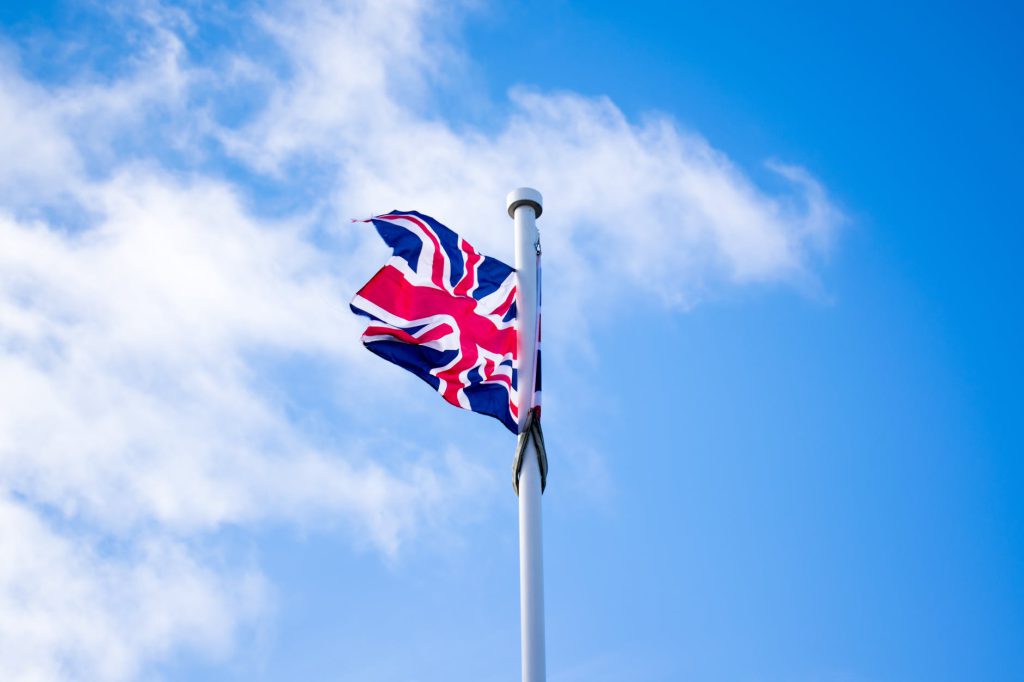
By Olivia Bridge In the midst of a global pandemic set to the backdrop of Brexit, ending violence against women and girls (VAWG) appears to have slipped down the United Kingdom (U.K.) Government’s priority list. Yet, as campaigners and charities are acutely aware, abuse thrives in silence behind closed doors – and women and girls disproportionately pay the price. One form of abuse that charities fear is on the rise is female genital cutting (FGC), a practice which has affected more than 200 million women and girls worldwide, with a further 68 million more estimated to be at risk in the next ten years. It is said that every seven seconds, a girl somewhere around the world faces the potentially agonizing pain and trauma of being cut. What is FGC? The World Health Organisation defines FGC as a procedure which involves the “partial or total removal or the external female genitalia or other injury to the female genital organs for non-medical reasons.” There are four types of FGC that vary in severity, but all types are recognised as child abuse and a violation of women’s and girls’ human rights. In some cases, anaesthetics and antiseptics aren’t used, meaning not only is the initial cutting procedure traumatic, potentially life-threatening and painful, but survivors are at increased risk of blood infections, hemorrhaging and infection throughout their lives, and can face issues with urination, menstruation, pregnancy and penetration. Communities who practice FGC claim it is linked to tradition, faith and ideas around gender roles, insisting girls must preserve their virginity. Many families believe FGC to be a rite of passage for their daughters, and in some communities, it can go hand-in-hand with other practices, such as breast ironing and forced marriage. FGC is a global issue involving at least 92 counties, including the U.K. Despite landmark legislation making those facilitating the practice to be punishable for up to 14 years in prison, girls born to families of these regions in the U.K. are at a heightened risk of being taken abroad under the false pretense of a special ceremony. How prevalent is FGC in the U.K.? In the mere five years that the U.K. has been recording data, 24,420 women and girls have been identified by the National Health Service (NHS) as having undergone FGC, with 6,590 being treated in the year up until March of 2020 alone. 205 victims or survivors were U.K.-born. In total, it is estimated 137,000 women and girls are living with its effects in England and Wales. But many believe the official figure to be the tip of the iceberg considering most survivors (80%) go undetected until they come into contact with midwives or obstetric services. But some women may never come into contact with the NHS at all, including women who don’t have Indefinite Leave to Remain or any form of secure immigration status, in part, either because they are unaware of the support available, or they fear immigration enforcement. What is the COVID-19 impact? However, the COVID-19 pandemic appears to have ramped the practice around the globe. A policy briefing by the Orchid Project in September illuminates the extent, noting, “COVID-19 related lockdowns are being seen as an opportunity to carry out FGC undetected,” across East and West Africa; and “economic hardship is driving increased rates of FGC because of parents seeking ‘bride prices.’” Other research conducted by UNFPA anticipates that as a result of coronavirus disruptions to FGC prevention programmes, as many as two million more cases could take place in the next ten years that would otherwise have been avoided. As such, it estimates a one-third reduction in the progress toward achieving the Sustainable Development Goal of eradicating the practice by 2030. Campaigners attribute the rise to mass school closures, a decrease in access to support and health information, and the economic situation forcing girls into marriage for families to secure a dowry. Indeed, as joint research points to prove, whenever girls are stifled from education, they become increasingly more vulnerable to abusive practices. For this reason, campaigners fear the true scale of gender-based violence is yet to be realised as the U.K. creeps in and out of lockdown and restrictive measures are tweaked every few weeks. Kate Agha, the Chief Executive of Oxford Against Cutting, said, “With the rise in harmful traditions overseas, practicing-communities in the U.K. will come under increased pressure from family abroad to ensure they are part of the group and upholding cultural traditions based on honour.” What is the UK doing about it? The U.K. has remained determined to end FGC, setting a deadline to prevent it from occurring for good by 2030, in line with many other countries. Progress has been commendable. FGC has been outlawed in several Western countries including the U.K., Canada, Spain and New Zealand, among others, including 19 African countries. To date, the U.K. remains the largest donor to support the end of FGC globally, helping 10,000 African communities and assisting six African nations with a budget and new laws to criminalize it. However, amid these trying times, progress seems to be stalling and commitment stuttering behind if the U.K. is to realistically facilitate the end of FGC in the next ten years. For instance, despite being against the law for thirty-five years and a whole host of civil protections and laws being introduced in 2003, there has only been one successful prosecution, which took place in February of 2019. Meanwhile, charities claim social workers and even healthcare practitioners aren’t always trained and equipped to safeguard and handle victims or survivors with there being greater emphasis on support post-procedure than preventing it from happening in the first place. Due to a shocking knowledge gap in Lancashire hospices that emerged in August, medics are now receiving extra training. But how many more remain ill-equipped? Many believe the U.K. is silently withdrawing from its commitment altogether as it emerges that the Home Office has slashed funding from The National FGM Centre which, since its inception
Why human rights education, including FGC, is crucial for American classrooms
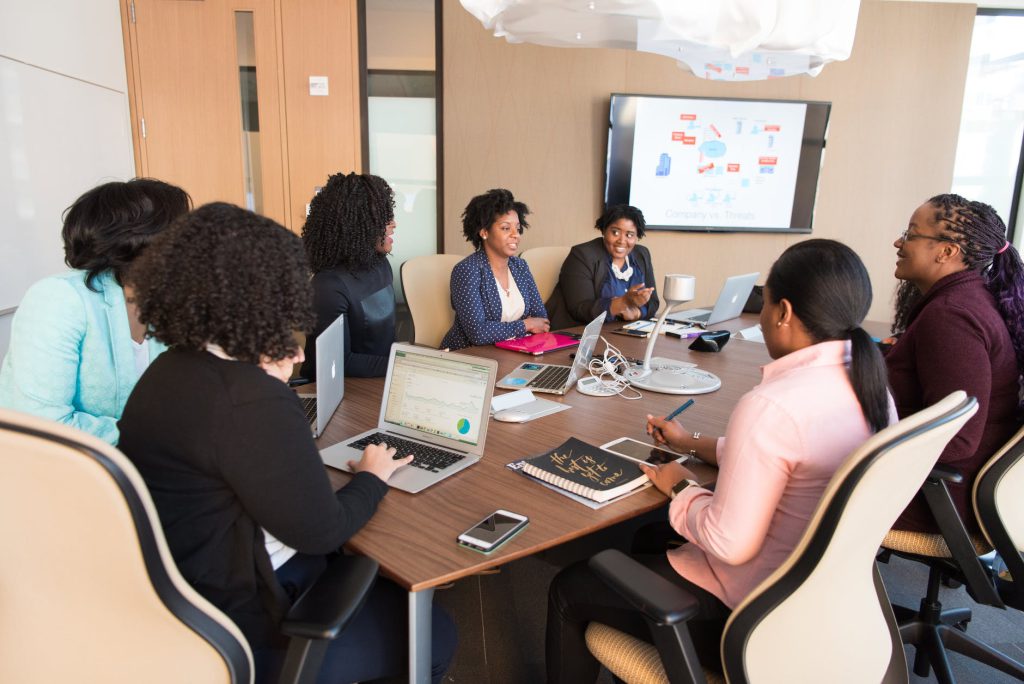
By Hunter Kessous Throughout high school, whenever I would tell people about my future goals to help survivors of female genital cutting (FGC), nine times out of ten the response would be, “What is FGC?” This is a question I never minded. As a human rights advocate, I’ve always taken the opportunity to educate my friends about this topic. I never expected that one day my peers at university would claim my desire to end the practice of FGC was neocolonialist, imperialist and simply wrong. I was shocked. I had read all about the harm that FGC causes to girls and women globally. I know, of course, that communities that practice FGC are protective of their tradition. However, I was completely unprepared to be met with hostility by my classmates. Soon, I noticed a trend: all of the students who were opposed to ending FGC were in the anthropology department. This left me even more puzzled—my experience with anthropology had been positive. We learned that culture is meant to grow and change over time. We learned about cultural relativism: the importance of viewing cultural practices through the lens of the culture itself. All of these things aligned with my view of FGC and approach toward abandonment. FGC is a cultural practice, but that doesn’t mean it can and should not change. Understanding the way communities that practice FGC view and justify their tradition is key to effectively encouraging abandonment of FGC. Why, then, do some anthropology students believe there should be no interventions to end FGC? Finally, I got answers. My global health professor led a discussion about FGC in class, which quickly turned into a ferocious debate between myself and three other students. Nearly all of what they said was untrue: FGC is a religious practice; medicalization makes FGC safe; and FGC is an African practice so we should not condemn it. FGC is often justified with religion, but it is not technically a religious practice. It pre-dates Islam and Christianity. Medicalization does not remove many of the physical and psychological dangers of FGC. It is a global practice-–happening even within the U.S.–that we should strive toward ending by allowing those from the communities that practice FGC to lead the initiative. These simple corrections were not well-received during the debate, potentially because the anthropology professors may have refused to take a stance on FGC as a human rights violation .. Herein lies the danger: misconceptions about FGC become all the more harmful when they are propagated by trusted sources. My experience showed me that the accuracy of information about FGC being taught in college classrooms desperately needs to be improved. Moreover, there is a general need for increased education about FGC in American classrooms. Public policy in England, as well as the state of Virginia (thanks to Angela Peabody of Global Woman P.E.A.C.E. Foundation), mandate that the harms, laws, and resources surrounding FGC be taught in sexual education courses for middle and high school students. These laws are important because we are raising the next generation of advocates. By teaching about FGC in schools accurately, we are empowering young people to be knowledgeable of and speak out against a human rights violation. This can and should be done through mandating FGC education in sex education classes and improving the accuracy of it being taught in university courses. To learn more about FGC, common misconceptions, and the importance of nationwide classroom education as a tool for FGC prevention, join Sahiyo for an educational webinar on July 30th at 1pm EST! Follow this link to learn more and register.
My decision as a mother to not cut my daughters

By Masuma Kothari Country of Residence: United Kingdom A vivid memory of my cut has lived through so many years that I can recall the entire act. This experience always intrigued me and it did lead me to the insights of child psychology as to how tender a 7-year-old is. Even though my personal experience was not very excruciating, I clearly remember the sense of betrayal, and it never went away. I was never convinced with the benefits theory that was proclaimed, and honestly, nobody really knew at a deeper level the real reason to follow this practice when I sought guidance. Because of the social influence, it was apparent that herd mentality, unexposed details, unquestioned thoughts promoted this practice. When my elder daughter was near the age, I had to figure out for myself if my daughter should also be cut. It felt as if I had Godlike power to alter something natural belonging to my daughter’s body forever, and that did not feel right. For me, the decision was a chaotic fight between the cultural beliefs and the scientific quest. I reached out to a few of my doctor family members to understand if there was any scientific aspect. All of them discouraged the practice. That is when the light in my heart beamed strong. I chose courage and discussed this openly within my group of Bohra friends. Surprisingly, I found most of the women were also against it and this strengthened my defiance! In fact, my mother secretly regretted having the practice done to me, too. I was sure I did not want to take away what God had bestowed on my daughters. With this clarity, I announced it to my family that we won’t be conducting this on our daughters. One additional powerful advantage was that we resided in the United Kingdom. Since it is a criminal offence here, it was an easy argument to assure a few of our noisy family members back in India. Because we as parents were strong, nobody really questioned or bothered to enforce this. It was simply about standing up for what we thought to be correct. My husband was firm from day one that he was not willing to get this done for our daughters, yet he had given me the ownership of making this decision in case I was convinced that it had to be done. My decision scale had a chunky weight on anti-FGM, which was also a major influence in my decision to not cut my daughters. There is absolutely no need to do this. If you are a parent struggling with the obligation to have this done, just say no to this age-old trauma-enabling practice and move on guilt- free with loud pride that you have made the right choice.
To those who say that Sahiyo is not their voice…

By: Anonymous Country: United Kingdom The past few days have been an emotional rollercoaster for me. I deeply believe in the values that Sahiyo espouses and wholeheartedly wish for the practice of FGC to end. To my dismay, I have witnessed a hate campaign against not only Sahiyo but the brave people who have been vocal against this practice. To those who say that Sahiyo is not their voice, I would like to clarify what Sahiyo is. Sahiyo is a cacophony of voices, a roar from a collective of activists whose voices unite. We are individuals who speak for ourselves and on behalf of minors, who have tried and continue to try to engage in dialogue to end this practice. In return, we have received silence and now slander. Our character, faith, morals, and intentions have been questioned and attacked. I, along with the community of activists who share my sentiments, do not speak on behalf of Sahiyo, or indeed any other adult. I speak on behalf of young girls who are forever altered without their consent; I speak on behalf of the innocent young girls across the world who have undergone this procedure or who will do so in the future; I speak on behalf of the girls who do not have a voice and are not old enough to understand what is happening to them and I speak on behalf of my 7-year-old self, who did not choose to undergo a procedure that has affected me for decades and will continue to do so. Now that I have a voice, I am being attacked for using it. I gain nothing from speaking up. No amount of campaigning will ever undo the permanent emotional, psychological and physical damage that resulted from a procedure that was deceptively forced upon me. To those who slander me, this is what I have to say to you: You are right to an extent – I do speak on behalf of others. I speak on behalf of your daughters, sisters, cousins, children’s friends, and every young girl who will undergo this invasive procedure so that they don’t suffer the way that I have. I hope that you remember this the next time you say laanat on me.
FGM before the Indian Supreme Court

By: Koen Van den Brande Age: 55Country: India It was to be expected… The Indian Supreme Court has been asked to look at the practice of ‘khatna’ – commonly known as FGM (Female Genital Mutilation) as a result of a Public Interest Litigation filed by Sunita Tiwari, a Delhi based advocate. There was a time, not so long ago, when the Suleimani community was known for people who showed great wisdom and leadership. For example when the educator, jurist and author Asaf Ali Asghar Fyzee advocated “the need to incorporate modern reforms in Islamic law without compromising on the ‘essential spirit of Islam’.” FGM has been in the news of late in India as well as the US, the UK and Australia, as a result of legal action taken against practitioners of ‘khatna’ and discussions on how to make existing legislation more effective. In the Mumbai-based Suleimani community, which I belong to, we have also been having some discussions on how to address this practice, which remains prevalent albeit more and more in what I would call an ‘intellectualised’ form. After all, we are not talking here about primitive tribal communities as in some countries in Africa, where in 10% of the cases, we can talk about ‘mutilation’ in the fullest, most horrific, sense. The community is well accustomed with the Islamic principle that the law of the land is to be respected. In the Prophet’s (PBUH) words ’Love of one’s country is a part of one’s faith” So at one level, the introduction of a new law would be the easiest way to address the issue… Or would it? In the UK such a law has been on the statute books for many years without ever leading to a single case in court and yet it is well-known that the practice continues there for thousands of girls. Or take the case of Egypt, where despite a law which declares the practice a crime, 98% of women continue to be cut. As an Egyptian government official comments in the highly informative as well as emotional documentary The Cutting Tradition, soberly narrated by Meryl Streep, you cannot put the entire population of a country in jail… A study in Senegal concluded that the introduction of specific legislation can be helpful, where it complements other efforts to educate and gain support for abandoning such a practice. However the study also observed that such legislation without the necessary work on the ground can build resistance if it is primarily seen as interference in a religious practice. In India there is no lack of existing legislation under which FGM would be seen as a criminal offence, as Maneka Gandhi, Minister for Women and Child Development recently spelled out in no uncertain terms, in response to a referral by the Supreme Court. In addition, supra-national bodies like the United Nations and the World Health Organisation take a clear stand on the subject. India is a signatory to the UN’s Universal Declaration of Human Rights, but it was not even on the radar of the UN until a group of women submitted a petition to recognise India as one of the countries where FGM is still practiced… In India there is the additional problem that the Muslim minority is always likely to find a new law addressing ‘khatna’, considered by some a ‘religious practice’, an imposition by a Hindu-dominated government – even if the law makes perfect sense. Such resentment could result in the practice being driven underground and once again reverting to the earlier back-alley horrors, which so many women have attested to. In fact, following the successful efforts of Sahiyo and others, a new site has recently been set up protesting ‘interference’, as expected. It would of course be much better if the two sides agreed to sit together to work out a sensible way forward. Sunita Tiwari is quite clear. She wants ‘khatna’ to be made an offence which is ‘cognizable, non-compoundable and non-bailable and offenders to get maximum punishment and penalty’. In reality, and for many Suleimani families today, ‘khatna’ has become what a father of two daughters called ‘a minor procedure’, when I asked him about it. That is to say that the ‘intellectualised’ form of the practice already insists on a medical procedure which simply removes a small bit of skin — the clitoral hood. Such a procedure may be justified and carried out legitimately to assist a grown-up woman. Which still leaves the question how one can justify making that decision for a child. As a result of my initial conversations and a bit of research, I wrote an article a while back in which I advocated a possible approach which would respect the view of those who consider this a spiritual matter and the rest of us. I believe this approach would also address the urgent need for reform and recognise that a large majority of the world has deemed this practice, for some time already, a crime against a girl child. What I proposed was that the community leaders could simply teach and mandate that a woman had to be of the age of consent to allow what should then be a largely symbolic ‘cut’ and that it should always be performed under medical supervision. At least one of the Bohra community’s spiritual leaders seems to have taken a similar view. He was reported in the media recently as saying ‘FGM should be by choice for adults’. Unfortunately this statement has become somewhat ‘politicised’ due to the succession struggle which is currently before the court in Mumbai. This proposed approach would also address another ‘law’. It could help resolve the current dilemma for any medical practitioner who would prefer not to break his or her Hippocratic oath. This oath – ‘do no harm’ – insists that a doctor can only perform a procedure on a patient which is actually in that patient’s interest. It must be difficult for any doctor to argue that ‘khatna’ is
We need a Bohra Revolution
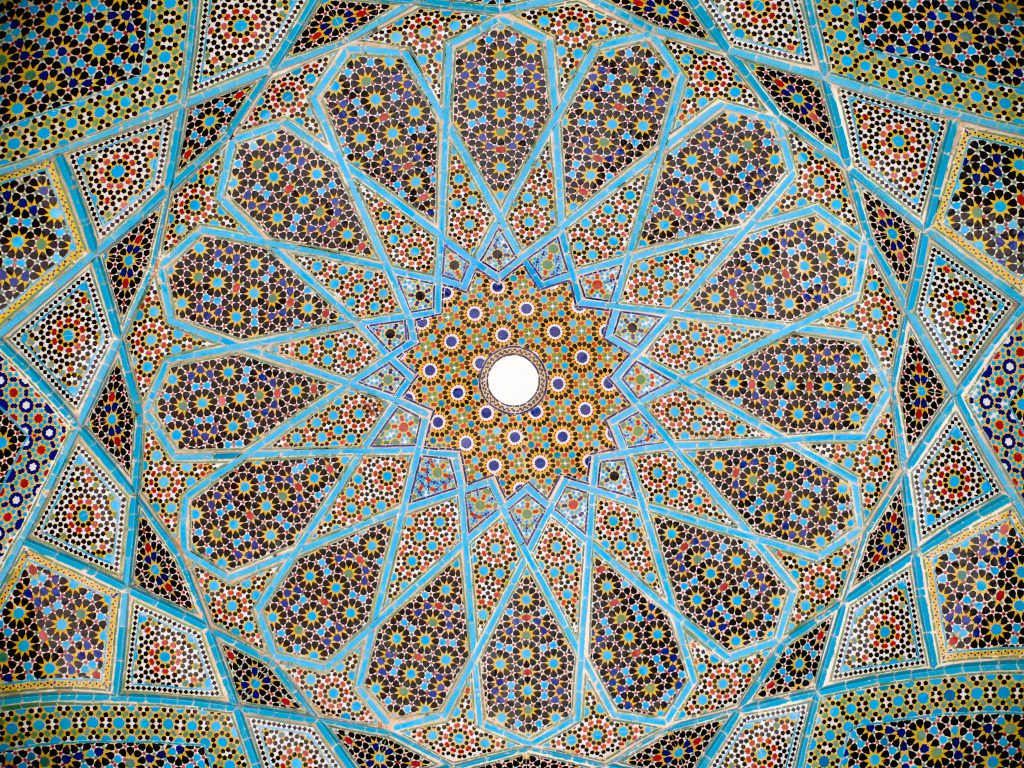
By: M Bohra Age: 23 Country: United Kingdom The ongoing investigation into Dawoodi Bohra doctors engaging in khatna, or female genital cutting (FGC), and the community leadership’s ambivalence regarding this practice, have once again brought up unanswered questions. What message is the leadership in India sending to the Bohra community when it disowns the doctors’ acts, not for their irreligiosity, but for their illegality in the West? Must the Bohra leadership accept the legal and moral responsibility of promoting khatna, especially since they advocate travelling to countries without FGM laws to continue this practice? Or can we expect them to continue throwing their misinformed, fanatical and grovelling followers under the bus to save themselves? Many Bohris, in the privacy of their friends and families, will complain about the strict social norms that regulate every act of our lives within the community: where we pray, what we wear, who we do business with, what our family roles are, who we befriend, what we say, how we dissent, how we think. These criticisms are kept out of the community arena by the authoritarian diktats of the leadership. They hold the power to socially boycott (which, for many community-linked businesses is linked to economic loss), extort money for officiating religious ceremonies (including permitting travel to the Hajj pilgrimage), and even denying burial in Bohra cemeteries. While we continue to chafe under this authoritarian religious regime, however, we must acknowledge our own prejudices. Bohris, despite all evidence, believe that we are God’s chosen people. We consider ourselves not only superior to non-Muslims (which is a broader Islamic problem), but even non-Bohra Muslims. We call our own community “mumineen” (the believers), and the others “musalmaan”. Even other Shia groups are generally only respected during the first ten days of Muharram, when we enthusiastically join our “Shia brothers” in the Ashura processions and sermons, only to exclude them from our lives on the eleventh day. We consider our mosques cleaner, our prayers more spiritual, and even our cemeteries as somehow more special. We are “blessed” to be ruled by tyrants, who guarantee us a heavenly afterlife in exchange for worldly money. Are we surprised that the leadership continues to promote a domesticated and desexualised ideal for our women, when it promotes a passive and unintellectual ideal for our men? It is important to remember that their power comes from our submissiveness, which is the result of our own prejudices. We need to introspect and question the foundations of our own biases. What is unclean about a non-Bohra mosque? What is inappropriate about performing the Hajj without being led by a Bohra priest? What is the problem with marrying outside the community? Can Bohra women question the religiously-sanctioned ideal of making rotis and handicrafts confined to their homes? Why do we have to control women’s sexuality through physical means, but not men’s? If the current system is broken and cannot be reformed, are we ready to create new religious and social spaces with other disillusioned Bohris? Can we create new inclusive and non-hierarchical spaces to end religious dogmatism, bring financial accountability, provide spiritual healing and engage in progressive social reform without prejudice? Here’s a little history lesson to conclude this piece. The office of Dai Al-Mutlaq, which is currently held through hereditary means by Mufaddal Saifuddin, is not the same as the position of the Imam, who is considered as the rightful spiritual and political successor of the Prophet in all Shia traditions. The first Dai was appointed by Arwa Al – Sulayhi, a long-reigning queen in Yemen, as a vicegerent (deputy) for the young Imam At-Tayyib. The succession of Dais was not always hereditary, and was likely based on spiritual and political merit. Increasing persecution drove the leadership to settle in Western India, where they were welcomed by a community of religious converts. Note how the position of the Dai was created by a powerful woman ruler (who probably wasn’t told to make rotis and handicrafts), not as a hereditary office, and owed its continuity to the goodwill of the new community of Bohris in India. Over the centuries, the leadership has forgotten who was in charge. It’s time for a reminder.
Detroit FGM/C case: Why two more arrests have left me feeling bittersweet
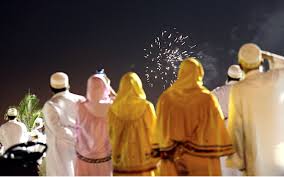
By: Anonymous Country: United Kingdom Age: 32 Today is a bittersweet day. The news of two more arrests linked to the first FGM case in the US has left me torn between elation and sadness; while a part of me feels like justice is being served to those who perform, aid and abet FGM, another part of me is saddened by the effect that these arrests have had on the perception of the community and Islam. Gone are the days when I would tell people that I belonged to the Dawoodi Bohra community and would receive the response, “Oh, the women who wear the colourful clothes with embroidery?” Now, I hear “Oh, isn’t that the community that practices FGM? I read about them in the paper.” I scroll down after reading an article online about the current FGM cases and read horrible comment after comment. Heinous things are being said about not only the Dawoodi Bohra community, but also about the wider community of Muslims, the majority of whom condemn FGM. These prosecutions are being used as the fuel to fire Islamophobia, and hurtful attacks are being made on the religion that over a billion people worldwide adhere to. Other Muslims are distancing themselves from the Dawoodi Bohra community, calling us insular and saying that we stick to ourselves. I feel a further isolation from people who believe in the same God as me and also pray towards Makkah. While I think of all of the girls and women, including myself, who suffered through this barbaric procedure, I also think of the girls who are now in protective custody, or whose mother is currently behind bars. Those children were and are innocent, and are now suffering due to the criminal actions of their parents. I question who is at fault here. While the authorities are prosecuting those who are performing, covering up and facilitating FGM, those who endorse and encourage the procedure, both privately and publicly, remain unaffected. There are still articles being posted that defend the Dawoodi Bohra community as being comprised of law-abiding citizens, yet murmurs of FGM fill the walls of masjids throughout the US and other countries where FGM is categorically outlawed. The first step to solving a problem is admitting that a problem exists in the first place, and it seems that there are some in the community who are not prepared to take this step. I feel a tenseness in the air; I quietly discuss this case among close friends and relatives who share my sentiments, frightened to openly voice my happiness that there is yet another breakthrough in ending this practice. I feel the heavy hand of the community leaders bear down upon me, and feel stifled to openly express my feelings. This is the fear that prevents others to come forward. It is real and it is suffocating.
Sahiyo blog post wins a Laadli Media Award
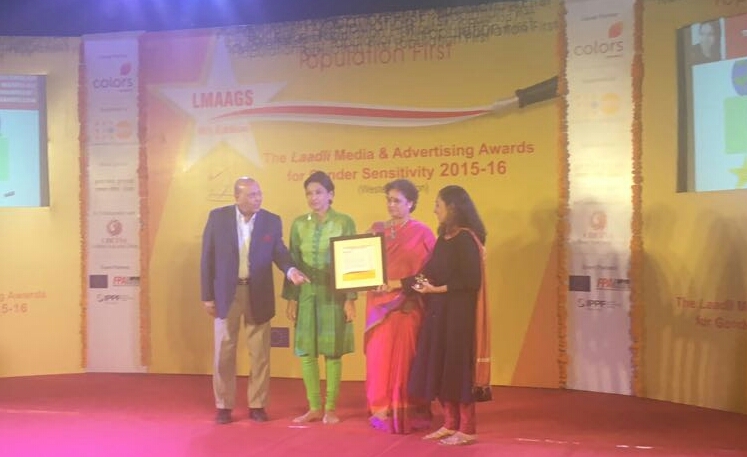
A Bohra woman’s personal essay about her experience of Female Genital Cutting, published on Sahiyo’s blog last year, has won the prestigious Laadli Media Award for Gender Sensitivity 2015-16. The essay, titled ‘It was a part of me…part of my womanhood‘, won the award for Best Blog in the ‘Web-blogs’ category in the eighth edition of the Western region Laadli Awards, which celebrate gender sensitive advertising and journalism in India. The award ceremony was held at Ahmedabad’s Gujarati Sahitya Parishad on February 23, with prominent dancer and artiste Mallika Sarabhai as the chief guest. The winning essay describes the author’s memory of undergoing ‘Khatna’ and her struggle to come to terms with it. Read below the jury’s citation on her powerful narrative: [blockquote]The blog is a powerful and vivid account of a woman’s memory of female genital cutting. She speaks about the secrecy of the practice as well as the young age at which it happens. This story is among a handful stories that carefully look at female genital cutting among the Dawoodi Bohra community in India.[/blockquote] This essay was among the first few accounts of Bohra women willing to share their stories on Sahiyo’s blog when it launched in December 2015. Sahiyo believes in the power of storytelling and this blog is a story-sharing platform for all those who feel passionately about khatna or FGC and who wish to see the practice end. We would like to say a big thank you to Population First, the organiser of the Laadli Awards, for honouring Sahiyo’s blog contributor through this award!
I was stripped of many things the day I was cut

(First published on January 23, 2016) by Mariya Ali Age: 32 Country: United Kingdom I have very few memories of my childhood, but one memory in particular stands out and haunts me to this day. Unfortunately, it’s a vivid, painful memory and fills me with anger when I recall it. I was five years old when my mother and aunt took my cousin and I on an “excursion”. I remember sitting in a car and approaching an unfamiliar block of apartments. I was confused; I didn’t know where I was and what I was doing there. Despite my seemingly endless young imagination, I could never have anticipated what happened to me next. I walked into a small apartment with a cramped living room at the end of a very short corridor. There was a dampness in the air and a slight smell from the poor ventilation. I approached the living room and sat on the floor. It was a warm day and I watched the net curtains of the large window slowly move with the breeze. I had been greeted by an old lady, whose face I can’t remember. I didn’t recognise her and was confused as to why I was currently in her apartment. I watched as she walked out of the room. I peered inquisitively into the kitchen and caught a glimpse of her heating a knife on the stove. I was always told to stay away from sharp knives at that age. Knives were dangerous. I could hurt myself. I remember the open flame on the stove and seeing the silver of the metal and the black handle of the knife while I watched her quickly hold it over the naked flame. She approached the living room with the knife in her hand, trying to conceal it behind her. She approached me. My mother asked me to remove my underwear. I remember saying no; I didn’t want a strange woman to see me without my underwear on. My mother assured me it would be okay; I trusted her and did as she asked. The old lady told me that she wanted to check something in my private area and asked me to open my legs. I was so young that I wasn’t scared at that time. I was confused, but not scared. I was innocently oblivious to how invasive and inappropriate this situation was and so I obediently did as I was told. I remember a sharp pain. An agonising pain. A pain that I can still vividly remember today. So intense that I still have a lump in my throat when I recall that moment. I instantly started sobbing, from pain, shock, confusion and fear. My next memory is that of blood. More blood than I had ever seen, suddenly gushing out from my most intimate area. I still didn’t comprehend what had just happened to me. I had believed that aunty when she had told me that she was checking something. I was young and naive enough to believe that people don’t lie and this was my first encounter when I realised that, unfortunately, the world doesn’t work like that. In so many ways I was stripped of many things on that day. My rosy outlook on life, my childhood innocence, my right to dictate what happens to my body and my faith in my mother not harming me. I continued to cry, the pain was excruciating and the sight of the blood traumatised me. I was given a sweet and comforted by my mother. The events after that are still hazy and my next clear memory is that of being back in the car and staring through teary eyes at the apartment building disappear as we drove away. Over the years I repressed this memory. There was no need to recall it. It was never spoken about and I still remained unaware of what transpired that day. A decade later, I was amongst some of my female friends. The topic of Female Genital Mutilation came up, or as I was to discover that day, “khatna”, a Bohra ritual performed on young girls. Hearing their recollections of what had happened to them, I finally realised that this is what had happened to me that day. I was mutilated. Thankfully for me, I had a lucky escape. The unskilled, uneducated woman who barbarically cut me did not cause me too much physical damage. Emotionally and mentally, there are many repercussions. I have a deep phobia of blood and a simmering resentment that my mother chose for this to happen to me. Although my mother believed that she was acting in my best interest, I struggle to come to terms with the fact that I was so barbarically violated. It may have been just a pinch of skin, but it was a part of me, a part of my femininity and a part of my womanhood.
Respected Syedna, we are all disappointed by your views on female circumcision
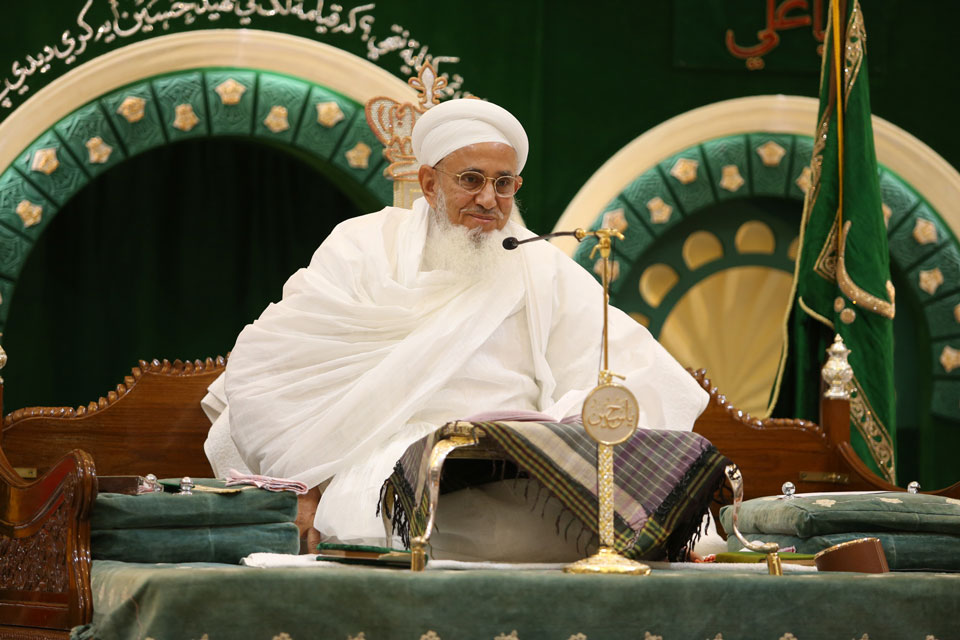
Syedna Mufaddal Saifuddin’s recent wa’az (sermon) in Mumbai has come as a disappointment. For almost three months now, Dawoodi Bohras who wish to see an end to female circumcision (khatna) had been hopeful. Starting with Sydney in February, many Bohra jamaats in different cities around the world have issued letters to their members, asking them to stop practicing khatna because it is against the law in those countries. (Read more about the jamaat letters here.) The jamaats issuing these letters – be it in Australia, USA, UK or Sweden – are all trusts that function with the sanction of the central Bohra leadership, whose headquarters are at Badri Mahal in Mumbai. The jamaat letters gave hope to Bohras across the world, even in countries like India and Pakistan where there are no laws against female genital cutting, that the Bohra leadership would eventually ask the whole community to stop practicing khatna. After all, in a community that is so close-knit and centralised, why should girls in some parts of the world be spared from circumcision, while girls in other countries continue to be cut? If Dawoodi Bohras are one community, how can there be different rules based on geography? In this light, the Syedna’s recent public sermon on April 25 has left large sections of Bohras surprised and disheartened. His speech, given at Mumbai’s Saifee Masjid on the occasion of the death anniversary of 51st Syedna Taher Saifuddin, made an indirect but fairly clear reference to khatna. A four-minute audio clip of that section of the sermon has been circulating among Bohra social media groups all week, and several concerned community members wrote to Sahiyo to tell us that they had attended the wa’az and were shocked by the Syedna’s statements. On April 29, The Times of India wrote a report about these statements, which can be read here. In the sermon, delivered in the Lisan-ul-Dawat language, Syedna Mufaddal Saifuddin can be heard saying the following: [blockquote]“Whatever the world says, we should be strong and firm…whatever they say, it does not make a difference to us, we are not willing to accept [what they say]…we are not willing to talk to them. What are they telling us? That what we are doing is wrong?…who are they to teach us?”[/blockquote] The Syedna then makes a reference to other vices that people have, such as drugs or cigarettes, asking, “Why don’t they tell those people [that they are wrong]?” A clearer reference to khatna comes with the following words in the speech: [blockquote]“It must be done. If it is a man, it can be done openly and if it is a woman it must be discreet. But the act must be done. Do you understand what I am saying? Let people say what they want…but Rasoolullah [Prophet Mohammed] has said it…Rasoolullah will never say anything against humanity. He has only spoken [of] what is beneficial…from the perspective [“haisiyat”] of the body and the soul. What do they say?…that this is harmful? Let them say it, we are not scared of anyone.”[/blockquote] The Syedna’s sermon is significant for many reasons. This is the first time that he has made such a clear reference to khatna in public without explicitly spelling it out. All through the recent Australia case hearings as well as the anti-khatna campaigns by Sahiyo, Speak Out on FGM and other Bohras, the community was eagerly awaiting a word on the subject directly from the Syedna. But his declaration that Bohras must continue the act, irrespective of opposition from various quarters, indicates that Bohra authorities were not being sincere when they issued various jamaat letters around the world. The implication of his speech is that the jamaat letters asking people to stop khatna are insignificant – a mere formality to save Bohras from facing criminal consequences in countries where female genital cutting is illegal. Were the jamaat letters a mere pretence to hoodwink international governments? His speech says “the act” must be done openly for men and discretely for women. Why? The Syedna says that the “the act” must be practiced because the Prophet recommended as something beneficial. But according to the jamaat letters issued with the sanction of the Syedna, the Prophet also preached the value of “hibbul watan minal imam” – love and loyalty for the laws of one’s country. So which teachings of the Prophet must Bohras in those countries follow? Most significantly, we would like to point out one thing: the Syedna’s speech dismisses and rejects all opposition from “them”, from all those saying that khatna is harmful and must not be practiced. The “they” he is referring to, however, are not just governments of countries like Australia or the USA. The strongest form of opposition to khatna is now coming from within the community – from Bohra women who have either undergone khatna or have seen their loved ones go through it, and from Bohra men who are horrified that their daughters, sisters, mothers and friends have to go through the cut. These are Bohras of all hues – staunch believers, regular masjid attendees, occasional attendees, sceptics, liberals, traditionalists, reformists – but they are Bohras, and they no longer want the practice of khatna to continue. By alienating these women and men as “they”, as outsiders, the opposition cannot be wished away.Those opposed to the practice have strong reasons for their views, and we urge the Syedna and all Bohras to engage in meaningful debates and discussions on the issue, rather than trying to shut out opposition. Lastly, the Times of India report quotes a source close to the Bohra authorities, claiming that this speech was not about khatna and has been misinterpreted. However, hundreds of Bohras have interpreted his speech as a reference to khatna and circulated the audio clip widely. If the leadership believes that all of these people misinterpreted the speech, we urge the Syedna to publicly clarify this, and make his stance on khatna clear.
